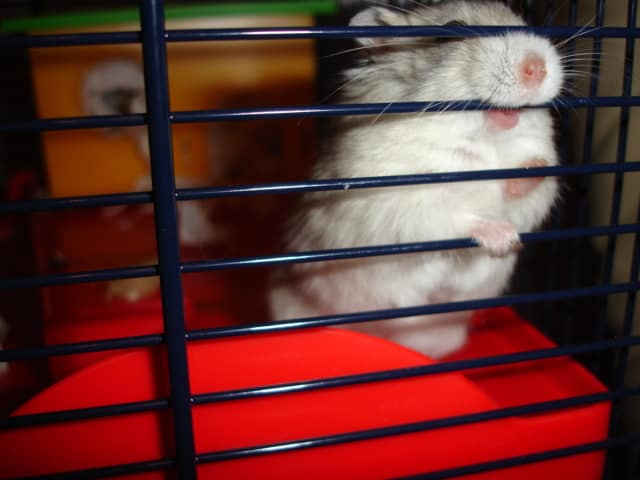

- HOW TO STOP HAMSTER FROM CHEWING ON PLASTIC CAGE HOW TO
- HOW TO STOP HAMSTER FROM CHEWING ON PLASTIC CAGE ZIP
- HOW TO STOP HAMSTER FROM CHEWING ON PLASTIC CAGE CRACK
The type we like to use are these cable ties available at Amazon as they are incredibly robust.
HOW TO STOP HAMSTER FROM CHEWING ON PLASTIC CAGE CRACK
Use your power drill to make the holes but be careful not to crack the lid. We would recommend using as many cable ties as possible as you do not want your hamster to chew through them or find any small gaps to squeeze through. Once you are left with the perfect hole, using your marker pen once more, mark out where exactly you plan to place the cable ties that will affix the mesh to the plastic. Mark where you want to use cable ties for wire mesh Once you get going, you may find it easier to use scissors. Use a drill to make some starter holesĭrill some starter holes along the visible line, before cutting out the inside of the box using a jigsaw or box cutter. This also allows plenty of room for cable ties to be added after. Make sure that the rectangle has a wide enough perimeter (around an inch) so that the lid does not snap whilst you are cutting it. Place the lid face down and using your marker pen, draw an outline of exactly where you want to put the wire mesh.

If you are interested in using this technique, then we explain it further below. Alternatively, you could cut out one of the side panels or drill holes all around the box to ensure that there is enough air circulating through the cage. The easiest location is on the lid, so for the purposes of this guide, we will be making a bin cage with a wire mesh lid. It is really important that your bin cage is well ventilated, so you need to decide where you will place your wire mesh. Decide where to use wire mesh (lid is best)

HOW TO STOP HAMSTER FROM CHEWING ON PLASTIC CAGE ZIP
Wire mesh and zip ties to secure it in place. For this reason, we would highly recommend the Sterilite Storage box (see at Amazon). Trust me, we got through quite a few plastic bins in pursuit of the perfect hamster pad. Top tip – select a plastic storage box that has a smooth lid, as the textured ones crack easily. If you are making this as a family, please ensure that there is parental supervision at all times. In order to make a hamster bin cage, you will not only need a large plastic storage box but equipment including a marker pen, box cutter or jigsaw, power drill, wire cutters, cable ties, sandpaper and mesh. Step by step guide to making a hamster bin cage If your hamster is a burrower, then you will also need to account for a deep layer of substrate. You should also bear in mind the height of your hamsters’ wheel when considering the depth of the box you want to use. And, whilst big is best, you need to remember that you will need to sit your bin cage somewhere safe and secure once made. That said, the size of the bin cage you choose to make will ultimately depend on the size of your hamster. You can measure the box by multiplying the bottom inside width by the bottom inside length. inches of total floor space and over 100 liters in size. How many litres should a hamster bin cage be?Ī bin cage should be at least 20 x 30 inches, taking up 600 sq. So, if like us, you are fed up of forking out dollars on inadequate hamster cages that are too small, difficult to place your hand through and a pain to clean out, then a bin cage could be the perfect solution. Bin cages are simple to make (providing you have the right sized box and equipment) and are popular for hamsters as they are spacious, easy to open and effortless to clean.īin cages are cheap to make in comparison to the prefabricated ones that you can buy at the pet store, which means that you can spend the money you have saved on hamster toys and accessories.
HOW TO STOP HAMSTER FROM CHEWING ON PLASTIC CAGE HOW TO
This guide explains how to make a DIY hamster bin cage in step by step stages. Despite the name, however, bin cages are not made from old garbage holders, but large plastic storage boxes.


 0 kommentar(er)
0 kommentar(er)
